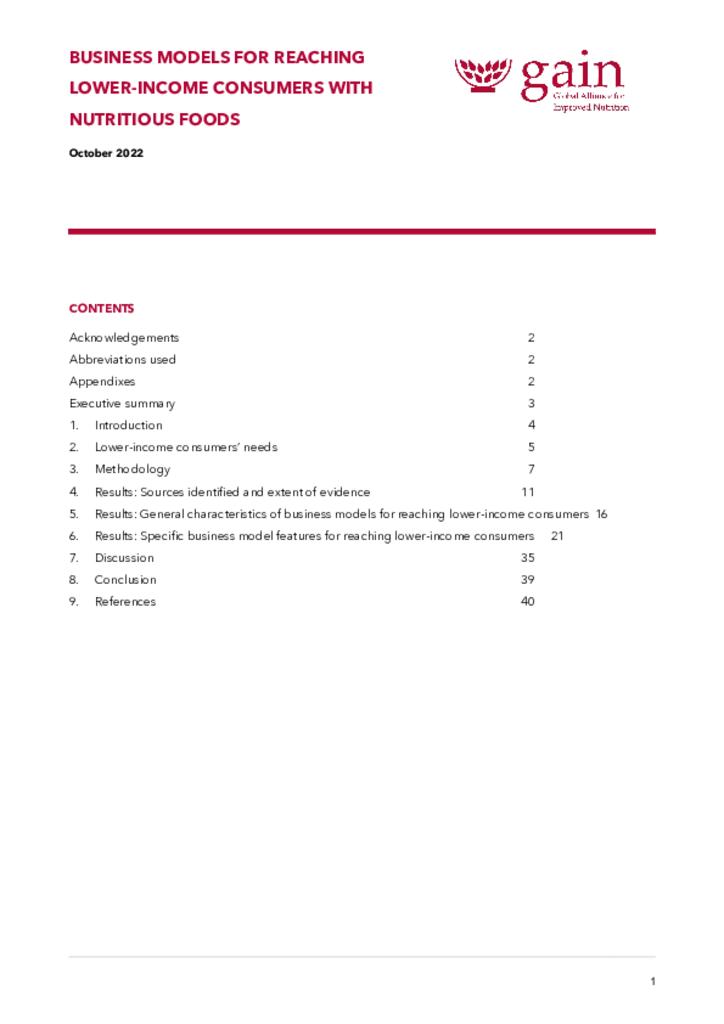Lower-income populations in low- and middle-income countries (LMICs) often face challenges accessing affordable, desirable, safe, and nutritious food, contributing to poor diet quality and malnutrition. As the main source of food for the majority of this population, private-sector firms have the potential to play a key role in alleviating this – and if they can do profitably, could help their bottom line in the process. However, little is known about the specific approaches they can use for doing so, or about how effective those are. To help fill this gap, this study seeks to identify the business model features that companies use to reach lower-income consumers in LMICs with food products. This is done through a systematic review of research as well as a scoping review of real-world companies.
After reviewing about 8,000 titles, 74 documents were deemed eligible for inclusion in the systematic review, mostly reporting on case studies of specific approaches, while the firm scoping uncovered about 99 eligible firms, primarily in East and Southern Africa and South Asia. These covered a diverse range of food types and included both SMEs and large multinational firms.
The review found that, at a conceptual level, lower-income consumers can be reached through adaptations to the product, to the branding and marketing, and to the distribution and retail model; it also noted that scaling was an essential but difficult consideration, with several options proposed for reaching scale. In addition to these cross-product considerations, the literature makes clear that there are a number of challenges with marketing nutritious foods, specifically – including limited demand and awareness, lack of trust and issues with labelling, risk aversion, low willingness to pay, and challenges with ensuring frequent consumption. The review also uncovered 13 specific business model features that firms have used to reach lower-income consumers with food products: Cross-subsidisation, increasing value through convenience, use of waste products, less desired parts, quality segmentation, cheaper ingredients, small sizes, selling in flexible quantities, no or reusable packaging, distribution hubs, bespoke last-mile distribution networks, providing new support to existing retail/distribution networks, and direct sales in underprivileged areas. None of these features alone can ensure success with either reaching lower-income consumers or doing so in a financially viable way: each feature needs to be supported by the other aspects of a solid business model, and companies often adopt multiple different features at once.
While the review did not limit its scope to only examining models used by SMEs, all business model features identified were used by SMEs. Similarly, the review did not limit its scope to only examining specific foods, but the results do not suggest that vastly different business model features are needed to successfully reach lower-income consumers with highly nutritious foods as opposed to less nutritious ones (aside from the issues summarised above).
The review also made clear that there is a considerable deficit of high-quality evidence on the ability of the business model features discussed here to actually reach lower-income consumers, and additional rigorous evaluation of these approaches is needed, considering their reach to lower-income consumers, their impact on those consumers’ diets, and whether or not this is done profitably.
